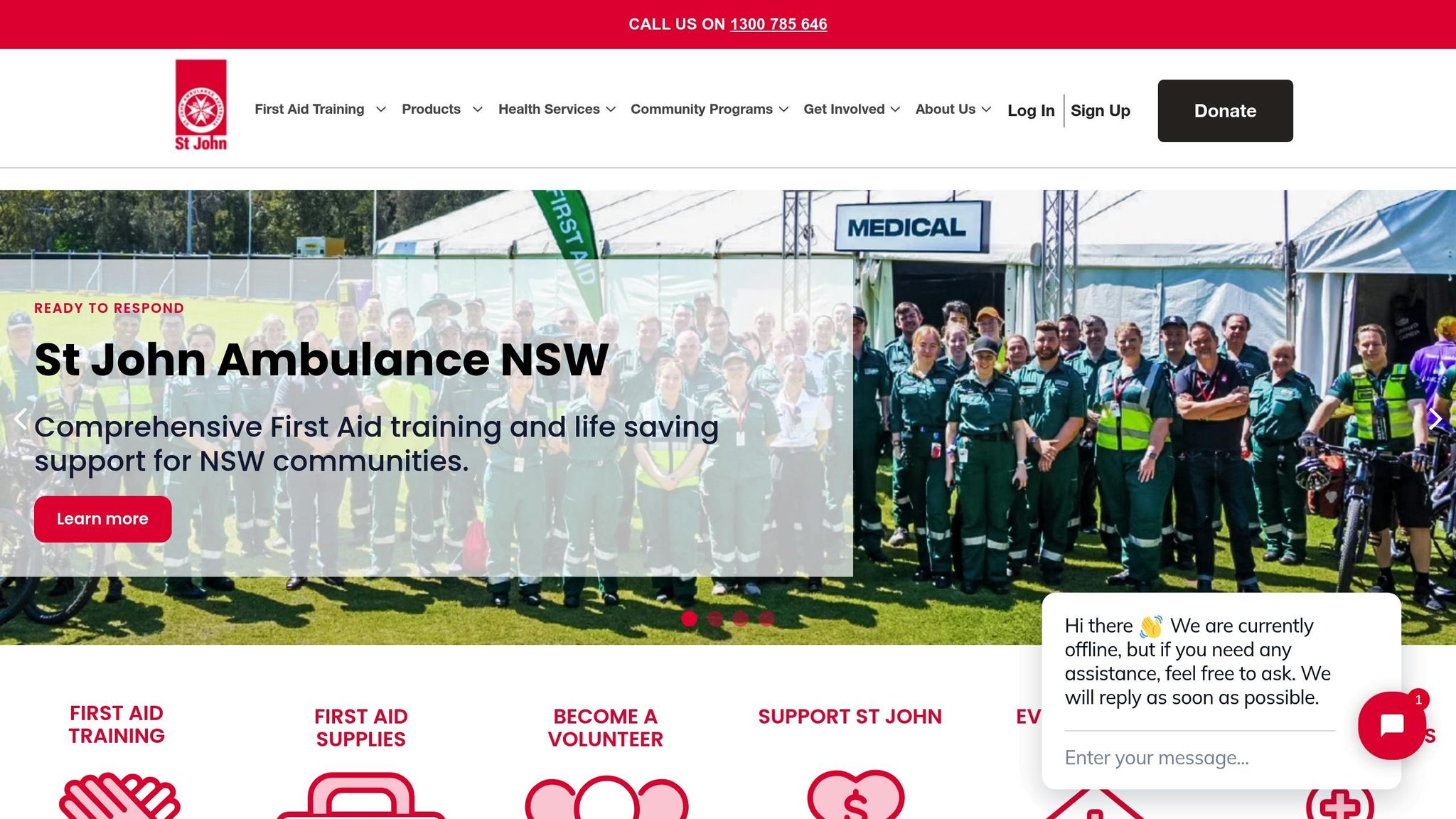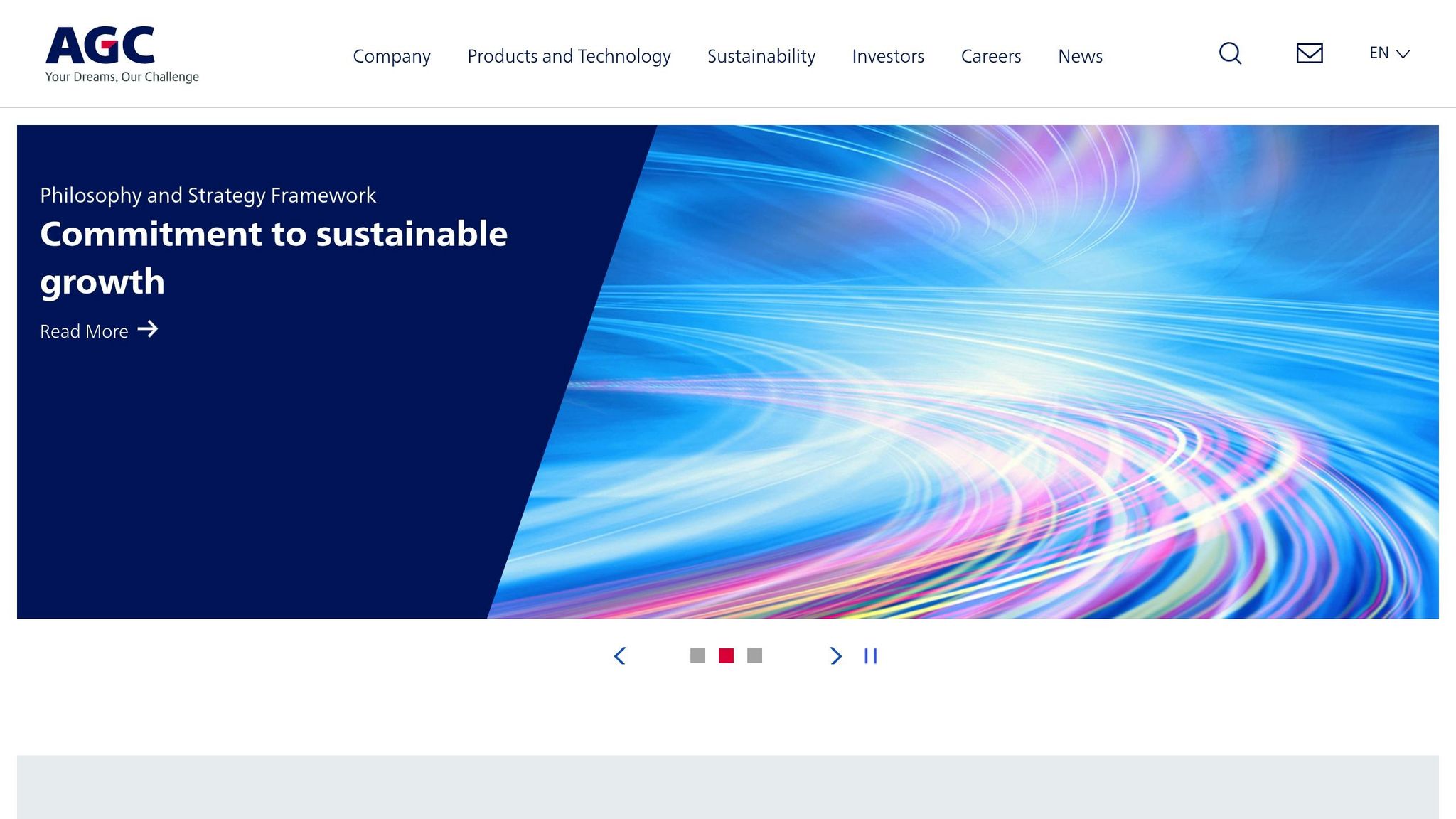Strong leadership is the key to reshaping how organizations work and thrive. This article dives into how leaders influence change by setting clear goals, engaging employees, and leading by example. Case studies from Microsoft, AGC, and healthcare organizations showcase practical strategies and measurable results:
- Microsoft: CEO Satya Nadella shifted the company’s mindset from “know-it-all” to “learn-it-all,” boosting collaboration and innovation.
- AGC: Takuya Shimamura used direct communication and employee involvement to revitalize a century-old manufacturing company.
- Healthcare Organizations: Leaders tackled low morale and burnout with feedback systems, recognition programs, and mentorship, improving engagement and retention.
Key takeaways:
- Clear vision and communication drive success.
- Employee involvement reduces resistance to change.
- Leaders must model desired behaviors and remain patient.
With the right leadership, organizations can achieve better engagement, stronger performance, and lasting results. Let’s explore how these lessons apply.
Creating Culture Change - St John NSW Case Study

Leadership Methods for Culture Change
Transforming an organization's culture isn't a simple task - it requires leaders to adopt effective strategies that combine vision, action, and accountability. Three key approaches stand out: defining a clear vision, engaging and empowering employees, and setting the tone through consistent, accountable leadership. These methods are rooted in the leadership principles discussed earlier.
Defining a Clear Vision
A successful cultural shift starts with a well-defined vision. Leaders need to paint a vivid picture of where the organization is headed, highlighting the values, beliefs, and behaviors that will guide the transformation. This vision should clearly explain how the change will benefit employees, customers, and stakeholders alike. To make the vision actionable, leaders can establish SMART goals - those that are Specific, Measurable, Achievable, Relevant, and Time-bound. These goals translate lofty aspirations into practical steps.
As Harvard Business School Professor Joshua Margolis puts it:
"Leading at scale and scope requires you to treat communication as a tool to reach out to people, captivate heads, and move hearts, so those you're leading understand your actions and goals, and, perhaps more importantly, so they understand where they fit and why their work matters."
To ensure the message resonates across all levels of the organization, leaders should use a variety of communication channels and actively involve middle managers. These managers act as vital advocates, reinforcing the vision and helping it permeate the organization.
Employee Engagement and Empowerment
Cultural change thrives on employee involvement. Leaders can encourage participation by fostering an environment where feedback is valued, collaboration is prioritized, and contributions are recognized. Creating cross-functional teams brings diverse viewpoints into the conversation, while equipping middle managers with proper tools and training ensures consistent messaging throughout the company.
Regular pulse surveys, interactive workshops, and other engagement strategies can help identify gaps between the current culture and the desired one. A powerful example of employee engagement in action comes from Starbucks. In 2018, the company closed its stores for a day to conduct racial bias training, demonstrating its commitment to inclusivity and showing how employee involvement can drive meaningful change.
Leading by Example and Accountability
Leadership during cultural transformation isn't just about setting expectations - it's about living them. When leaders consistently model the behaviors they advocate, they inspire others to follow suit. By maintaining high standards and making their own actions align with the organization's goals, they create a ripple effect of accountability.
Promoting a growth mindset - where challenges are seen as opportunities to learn - and ensuring transparency in decision-making are equally important. These practices build trust and encourage everyone in the organization to take ownership of their role in the transformation. When leaders lead by example, they set the stage for lasting cultural change.
Case Studies: Leadership Impact on Culture Change
Examples from the business world show how leadership can reshape organizational culture. These case studies explore different methods leaders have used to drive change and tackle challenges head-on.
Microsoft's Growth Mindset Transformation Under Satya Nadella
When Satya Nadella stepped in as Microsoft's CEO in 2014, he quickly realized the company needed a cultural overhaul. The existing "know-it-all" mindset was stifling innovation and collaboration. Nadella's vision was to replace it with a "learn-it-all" attitude. To achieve this, he championed values like learning, resilience, and empathy. He encouraged teamwork, reframed failures as opportunities to grow, and introduced leadership principles designed to empower employees. These efforts were supported by strategic moves, including acquisitions that aligned with the new culture, and a focus on diversity and inclusion.
Kathleen Hogan, Microsoft's chief people officer, summed it up:
"We are explicit about what we aspire to, which is this growth mindset."
Nadella's approach shows how a clear vision and actionable strategies can overcome even deeply ingrained cultural barriers.
AGC's Shift to Innovation Under Takuya Shimamura

When Takuya Shimamura became CEO of AGC (formerly Asahi Glass Company) in 2015, the company was in trouble. Profits had plummeted to just a quarter of their 2010 level, and global competition was threatening its flat-panel business. Shimamura tackled these challenges head-on with a bold, transparent communication strategy. In a memo to 60,000 employees, he emphasized the need to "switch the light on inside all employees" and pointed out behaviors that were stifling innovation.
Instead of firing resistant managers, Shimamura reassigned them to roles where they could no longer block progress. He also rebranded the company as "Advanced Glass, Chemicals and Ceramics" to reflect its expanded focus. To ensure his message resonated, he held 150 face-to-face meetings annually, engaging directly with employees.
By 2019, internal surveys showed significant improvements in how employees felt about respect, recognition, and growth opportunities. Shimamura's philosophy was clear:
"It is the role of the leader to switch the light on inside all employees."
This case highlights how direct engagement and strategic leadership can ignite cultural renewal, even in traditional industries like manufacturing.
Healthcare Organization's Employee Engagement Initiative
The healthcare sector faces unique cultural challenges, with high stress and burnout affecting both employees and patient care. As of 2020, 93% of healthcare workers reported experiencing stress, 76% felt burned out, and only 44% of U.S. hospital staff were highly engaged. To address these issues, healthcare leaders introduced targeted engagement strategies. These included regular employee surveys with actionable follow-ups, peer recognition programs, and mentorship initiatives. Leaders also prioritized visibility and continuous feedback to strengthen connections with their teams.
The results have been striking. Organizations with employee recognition programs saw productivity rise by 63% and retention rates improve by 51%. Companies that foster strong learning cultures reported 30–50% higher engagement and retention, and mentoring programs further boosted retention rates. Additionally, highly engaged teams contributed to a 23% increase in profitability, underscoring the link between cultural improvements and performance.
These examples show that successful cultural transformation hinges on leaders who articulate a clear vision, lead by example, and commit to long-term investment in their people.
sbb-itb-97f6a47
Comparing Leadership Approaches
Building on the leadership strategies discussed earlier, these case studies reveal recurring methods that have successfully driven cultural shifts within organizations. By identifying these patterns, we can better understand what works when it comes to leading meaningful change.
Common Patterns Across Case Studies
One standout theme is Clear Vision Communication. Leaders who effectively communicate their vision see tangible results, including a 23% boost in profitability. For instance, Satya Nadella transformed Microsoft's culture from a "know-it-all" to a "learn-it-all" mindset, while Takuya Shimamura focused on inspiring employees by "switching the light on inside all employees."
Another key factor is Direct Employee Engagement. Regular interactions and feedback can increase engagement by as much as 50%. This personal connection between leaders and their teams proves essential for successful transformation efforts.
Behavioral Modeling also plays a pivotal role. Leaders set the tone by embodying the behaviors they wish to see. Whether fostering a learning culture or promoting transparency, they lead by example. As Charles O'Reilly from Stanford Graduate School of Business explains:
"Norms drive a lot of our behavior in organizations, and they're something that can really be managed by leaders within organizations."
A less flashy but equally important approach is Strategic Patience. None of the leaders expected instant results. Microsoft's cultural shift took years, AGC's transformation unfolded gradually, and improvements in healthcare organizations were steady. This patience aligns with research showing that 70% of change initiatives fail, often due to ineffective leadership.
Lastly, Employee Empowerment emerged as a game-changer. Empowered employees collaborate more effectively and adapt better to disruptions, resulting in a 30% increase in resilience. For example, Microsoft moved away from internal competition to foster collaboration, AGC revamped HR practices to support innovation, and healthcare organizations introduced peer recognition programs to boost morale.
The table below provides a clear comparison of leadership methods and their results across these organizations.
Leadership Methods and Results Comparison
| Organization | Primary Method | Key Actions | Measurable Results | Timeline |
|---|---|---|---|---|
| Microsoft | Growth mindset transformation | Shifted from "know-it-all" to "learn-it-all", emphasized learning and empathy, and aligned strategic initiatives | Improved employee morale, collaboration, financial performance, and technological innovation | 2014–ongoing |
| AGC | Direct engagement and transparency | Strengthened leadership directives, increased employee involvement, and restructured HR practices | Enhanced organizational culture and internal feedback | 2015–ongoing |
| Healthcare Organizations | Employee engagement initiatives | Introduced peer recognition programs, regular feedback systems, and leadership training | 25% increase in engagement scores and reduced turnover | Ongoing |
Tailored Approaches for Different Contexts
While the core principles remained consistent - clear vision, engagement, and persistence - each leader adapted their methods to suit their organization's unique challenges. For example, Shimamura's manufacturing background influenced his direct and transparent communication style. Nadella, on the other hand, emphasized learning and innovation, reflecting his focus on technology. Healthcare leaders concentrated on inclusive management practices to address sector-specific issues, ensuring employees felt valued and connected.
The Financial Case for Leadership-Driven Change
The financial benefits of strong leadership are undeniable. Organizations with robust leadership cultures are 12 times more likely to achieve superior business outcomes, while companies that manage cultural change effectively are 3.5 times more likely to outperform their peers financially. These case studies demonstrate that cultural transformation is not just about processes - it’s about people. Leaders who prioritize vision, engagement, and sustained effort set the stage for long-term success.
Best Practices for Leadership-Driven Culture Change
Building on earlier leadership strategies, these best practices break down key lessons into actionable steps. Leaders who embrace these principles can create meaningful change that boosts both employee engagement and business outcomes.
Key Lessons for Business Leaders
Leadership alignment is critical for successful transformation. Research shows that organizations with strong leadership are 2.3 times more likely to outperform their peers. For change to take root, every leader must fully understand and advocate for the shift. When leaders present a unified message, employees gain confidence in the organization’s direction.
Clear communication helps translate abstract goals into practical steps. Dominik Szot, a Forbes Councils Member, explains:
"Culture is the invisible force that shapes behaviors, decisions, and values across an organization, and any meaningful shift requires a clear picture of where things stand."
The financial benefits of a strong culture are undeniable. Employees who feel connected to their organization’s culture are four times more likely to be engaged and 43% less likely to seek new opportunities. Companies that prioritize employee-focused cultures often achieve profitability rates nearly 21% higher than their competitors.
Employee empowerment is another cornerstone of successful change. By involving employees in shaping the transformation, leaders reduce resistance and build a network of internal advocates. Studies reveal that change efforts are about four times more likely to succeed when key influencers support them.
Flexibility is equally important. Leaders who adapt to feedback and adjust strategies as needed can maintain momentum while staying aligned with their ultimate goals.
These lessons form the foundation for actionable strategies to guide cultural transformation.
Practical Steps for Driving Transformation
- Start with vision workshops to involve employees in crafting the transformation vision. Reinforce this vision through meetings, emails, and announcements.
- Model desired behaviors consistently at all leadership levels. Employees pay more attention to what leaders do than what they say, so authenticity is key.
- Create feedback loops to encourage two-way communication. Use anonymous surveys and open-door policies, and act on feedback to build trust.
- Provide leadership development programs to equip middle managers with the tools they need to lead effectively. Middle managers are crucial for bridging senior leadership’s vision with front-line execution.
- Measure progress regularly using clear KPIs. Track metrics like engagement, turnover, and productivity, and use the data to make informed adjustments.
- Celebrate milestones to acknowledge progress and recognize employee contributions. Even small celebrations can significantly boost morale and motivation.
Using Consulting Firms for Expert Support
While internal efforts are vital, external expertise can significantly enhance the success of cultural transformation. The Top Consulting Firms Directory connects businesses with firms specializing in areas like organizational change, strategic management, and cultural transformation. These experts bring proven frameworks, industry knowledge, and fresh perspectives that can accelerate progress.
Consulting firms offer several advantages. They often use structured change management methodologies, such as the Prosci Methodology, which focuses on managing the human side of change. This expertise is crucial, as research highlights that effective sponsorship is the top contributor to change success.
Additionally, external consultants provide objective insights that internal teams may overlook. They can uncover blind spots, challenge existing assumptions, and recommend strategies informed by successful transformations at other organizations. This outside perspective is particularly valuable when a company is too immersed in its own challenges to see clear solutions.
The directory features firms with expertise in areas like organizational change, strategic management, and digital transformation, ensuring businesses can find the right partner for their specific needs.
When choosing a consulting partner, prioritize firms with a strong track record in cultural change initiatives. The best relationships combine external expertise with internal knowledge, creating a collaborative approach that drives immediate results while building internal capabilities. This ensures that the transformation remains sustainable even after the consulting engagement ends.
The cost of employee disengagement underscores the value of consulting support. According to McKinsey, employee disengagement could cost a median-size S&P 500 company between $228 million and $355 million annually in lost productivity. Compared to this potential loss, investing in expert consulting is a practical and impactful decision.
Conclusion: Leadership's Role in Culture Change
The case studies discussed here highlight one undeniable fact: leadership plays the most crucial role in driving successful cultural transformation. Research shows that organizations with transformational leaders are 2.5 times more likely to see major performance improvements. On the flip side, roughly 70% of change initiatives fail, often because leadership doesn’t provide the necessary support or a clear vision.
Companies like Microsoft and AGC provide compelling examples. Their success wasn’t just about stating new values - it was about leaders actively inspiring their teams. As Takuya Shimamura of AGC put it:
"It is the role of the leader to switch the light on inside all employees."
This speaks to the importance of empowering employees to embrace change, rather than resist it.
Effective leadership not only drives cultural shifts but also delivers tangible business results. Companies with strong leadership are 12 times more likely to succeed and can see up to a 50% increase in employee engagement. The best leaders don’t just talk about change - they embody it. They communicate a clear vision, model the behaviors they expect, and engage with their teams consistently.
Cultural transformation starts with a decision to lead differently. Begin by clearly defining your vision for change and showing, through your actions, that you are fully committed. Employees take their cues from what leaders do, not just what they say.
If you’re ready to take the first step, consider working with experts who can help guide the process. The Top Consulting Firms Directory can connect you with firms that specialize in cultural transformation, offering proven strategies and fresh insights.
The real question isn’t whether your organization needs a cultural shift - it’s whether you’re prepared to lead it. Drawing on lessons from Microsoft, AGC, and others, start by living your vision every day. With the right leadership, transformation isn’t just achievable - it’s a smart investment.
FAQs
What steps can leaders take to effectively communicate a vision for cultural change?
Leaders can drive meaningful change within an organization by sharing a clear and engaging vision that ties directly to the company’s goals. This vision needs to be communicated consistently through various platforms - whether it’s during team meetings, company-wide updates, or internal newsletters - so that everyone in the organization is on the same page.
Equally important is getting employees involved in the process. By inviting feedback, addressing concerns openly, and creating space for honest conversations, leaders can build trust and foster a sense of ownership. When communication feels genuine, transparent, and relatable, it’s far more likely to inspire employees to rally behind the vision and work together toward achieving it.
How can leaders effectively engage and empower employees during a cultural transformation?
Leaders hold a key position in shaping workplace transformation by setting the example and motivating employees to adapt to change. To truly engage and inspire their teams, leaders must demonstrate the behaviors they wish to see and cultivate an environment where trust and collaboration thrive.
Effective communication is at the heart of this process. Leaders need to clearly explain the vision driving the change and help employees see how their individual roles contribute to the bigger picture. Acknowledging both individual and team achievements boosts morale, while involving employees in decisions fosters a sense of ownership and dedication. These approaches help align everyone toward a common goal, laying the groundwork for meaningful and lasting change.
Why is it essential for leaders to demonstrate the behaviors they want to see during cultural change?
Leaders are pivotal in driving meaningful change within an organization. By leading through example, they set the tone for the behaviors and values they want their teams to adopt. When employees observe their leaders consistently practicing what they preach, it fosters trust and strengthens the connection between leadership and the broader team.
This kind of leadership doesn’t just reinforce the organization's goals - it also speeds up the acceptance of new ways of working. By actively demonstrating the desired culture, leaders inspire their teams to align with the vision, creating a ripple effect that makes transformation efforts more effective and impactful.


